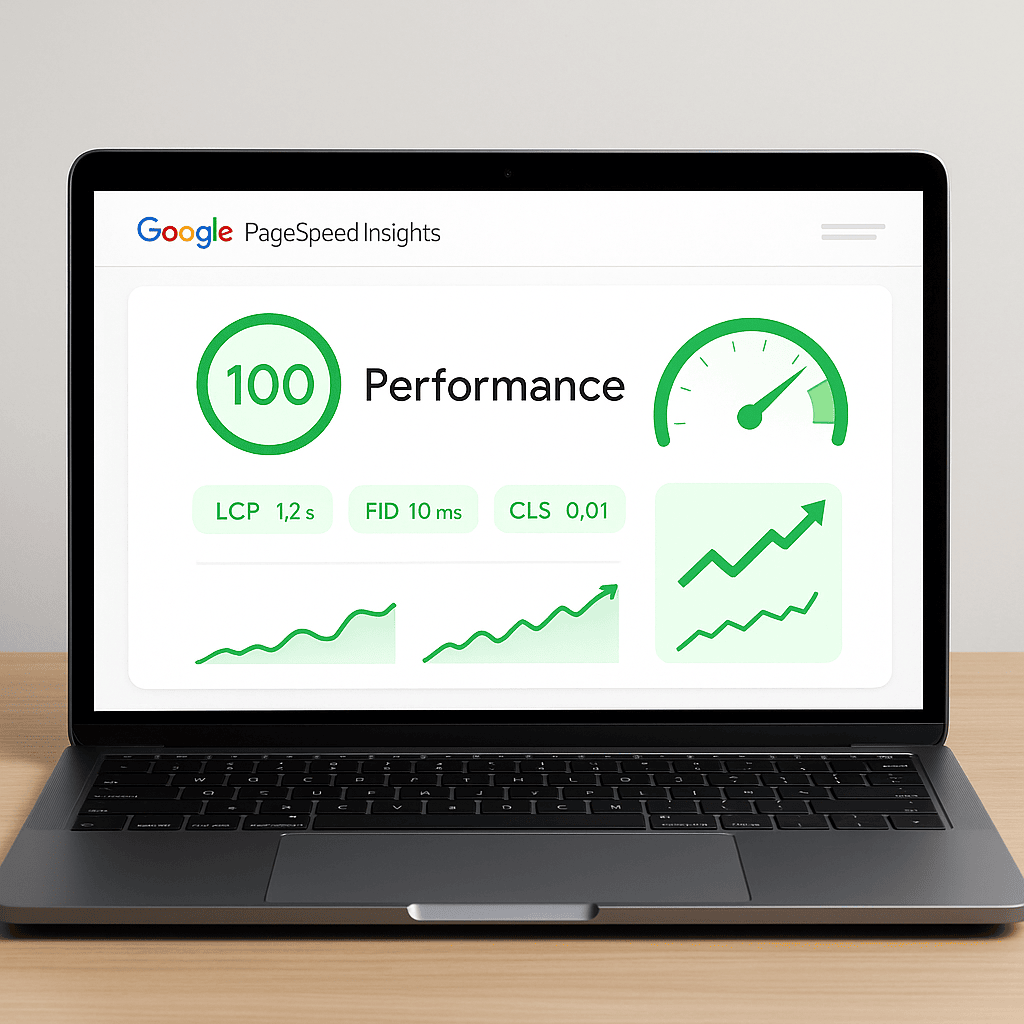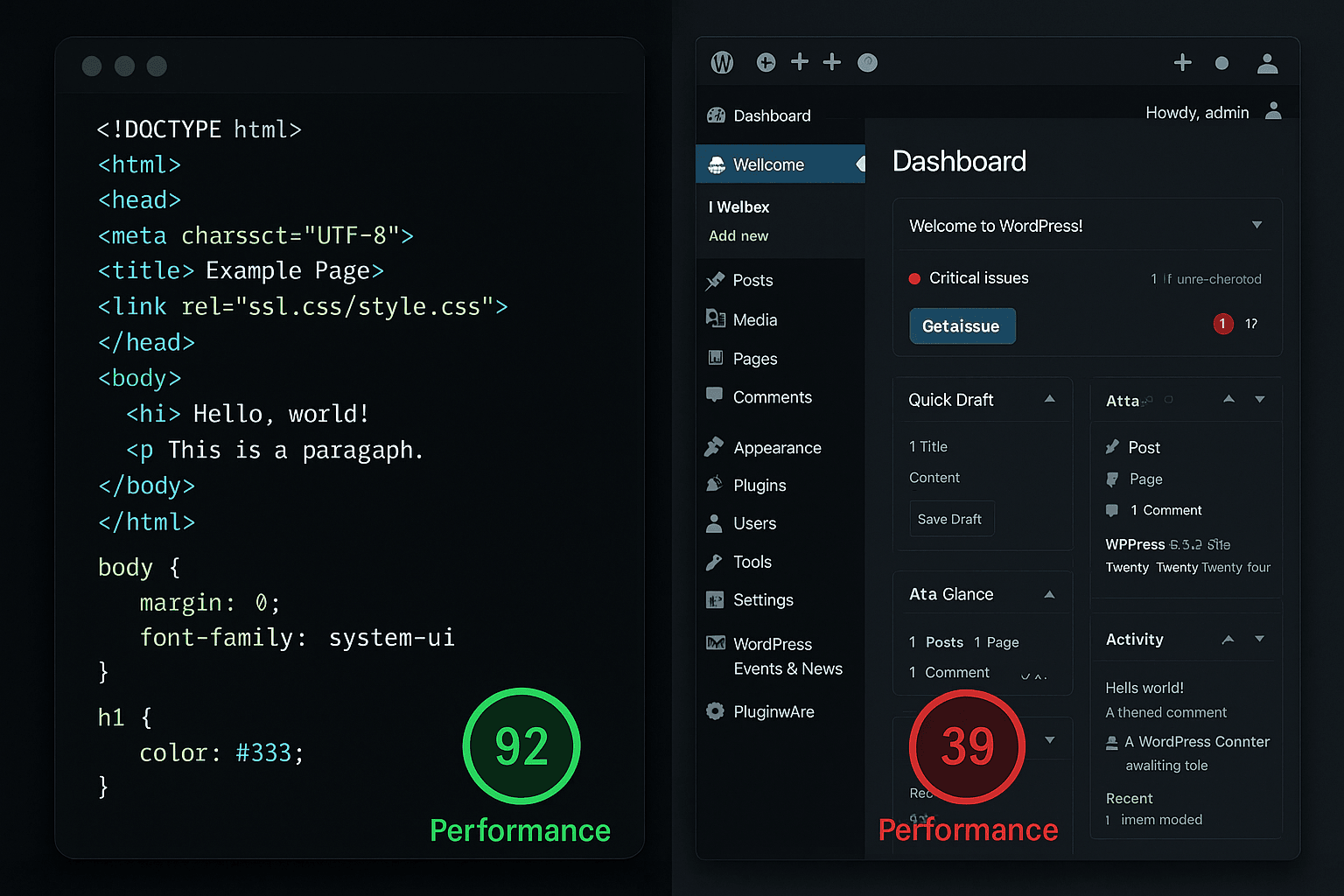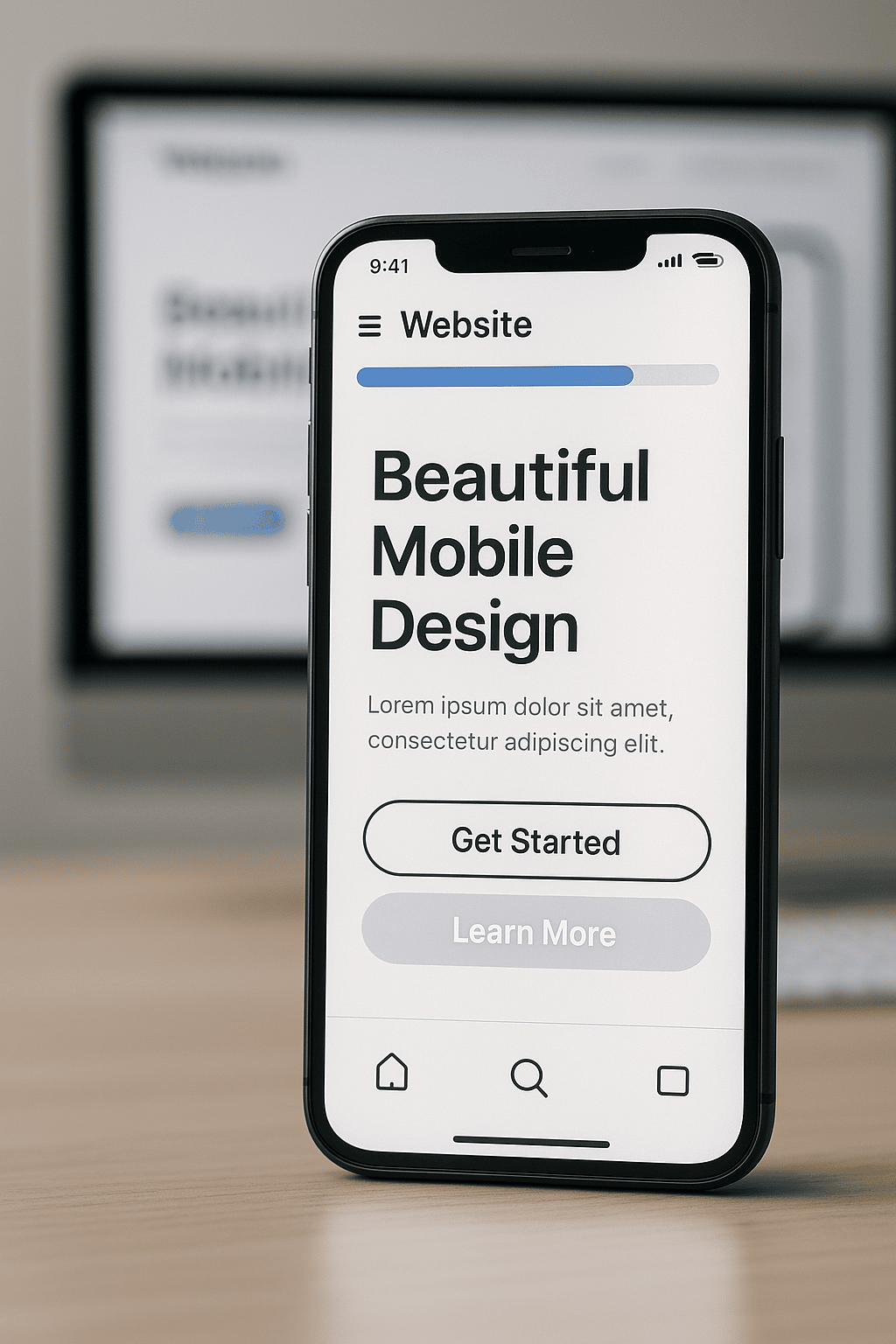
How to Achieve Perfect 100/100 PageSpeed Scores
Why PageSpeed Scores Matter More Than Ever
Google PageSpeed scores aren't just vanity metrics. They're direct indicators of user experience quality and search ranking potential. Sites scoring 90+ consistently outrank slower competitors, convert better, and retain more visitors.
A perfect PageSpeed score signals to Google that your site provides exceptional user experience, leading to higher search rankings and more organic traffic.
The Foundation: Clean, Hand-Written Code
Perfect PageSpeed scores start with the foundation. Hand-coded websites have inherent advantages:
- No framework bloat: Every line of code serves a purpose
- Optimized asset loading: Resources load exactly when needed
- Minimal DOM complexity: Clean HTML structure processes faster
- Efficient CSS: Streamlined stylesheets without unused rules
WordPress and page builder sites fight uphill battles against their own code bloat to achieve even mediocre scores.
Critical Web Vitals: The Three Pillars
Google evaluates PageSpeed through Core Web Vitals, three key metrics:
Largest Contentful Paint (LCP)
Target: Under 2.5 seconds Our Achievement: Consistently under 1.0 second
LCP measures how quickly the main content loads. We achieve sub-1-second LCP through:
- Optimized image formats (WebP, AVIF)
- Critical CSS inlining
- Preloading essential resources
- Efficient server response times
First Input Delay (FID)
Target: Under 100 milliseconds Our Achievement: Typically under 10 milliseconds
FID measures interactivity responsiveness. Hand-coded sites excel because:
- Minimal JavaScript execution
- No render-blocking scripts
- Optimized event handlers
- Efficient DOM manipulation
Cumulative Layout Shift (CLS)
Target: Under 0.1 Our Achievement: Usually 0.0
CLS measures visual stability. We eliminate layout shifts by:
- Defining image dimensions
- Reserving space for dynamic content
- Using CSS for all styling
- Avoiding JavaScript-driven layout changes
Advanced Optimization Techniques
Image Optimization Strategy
Images often account for 60%+ of page weight. Our optimization process:
- Format selection: WebP for modern browsers, JPEG fallbacks
- Compression: Aggressive optimization without quality loss
- Responsive images: Multiple sizes for different devices
- Lazy loading: Images load as users scroll
- Critical path: Above-fold images load immediately
CSS and JavaScript Optimization
Code optimization goes beyond minification:
CSS Strategies:
- Critical CSS inlined in HTML head
- Non-critical CSS loaded asynchronously
- Unused CSS rules eliminated
- CSS sprites for icons
JavaScript Optimization:
- Minimal JavaScript usage
- Async loading for non-critical scripts
- Tree shaking to remove unused code
- Local hosting of third-party scripts
Server and Hosting Configuration
Perfect PageSpeed requires optimized infrastructure:
- CDN implementation: Global content delivery
- Compression: Gzip/Brotli for all text assets
- Caching headers: Aggressive browser caching
- HTTP/2: Multiplexed connections
- Server location: Geographically optimized
Common PageSpeed Killers to Avoid
Most websites sabotage their own performance with these mistakes:
Third-Party Script Overload
- Social media widgets
- Analytics tracking pixels
- Chat widgets
- Advertisement scripts
Solution: Audit every third-party script. If it doesn't directly generate revenue, consider removing it.
Unoptimized Images
- Wrong file formats
- Oversized dimensions
- Missing compression
- No responsive variants
Solution: Implement comprehensive image optimization workflow.
Render-Blocking Resources
- Large CSS files in header
- Synchronous JavaScript
- Unoptimized web fonts
Solution: Optimize critical rendering path with proper resource prioritization.
Real-World Results: Before and After
Case Study: Local Service Business
Before (WordPress site):
- PageSpeed Score: 34/100
- Load Time: 5.2 seconds
- Bounce Rate: 72%
After (Hand-coded rebuild):
- PageSpeed Score: 99/100
- Load Time: 0.7 seconds
- Bounce Rate: 28%
Business Impact:
- 45% increase in organic traffic
- 67% improvement in conversion rate
- 3x reduction in bounce rate
Tools for Measuring Success
Monitor your PageSpeed optimization with these tools:
- Google PageSpeed Insights: Official Google scoring
- GTmetrix: Detailed performance analysis
- WebPageTest: Advanced testing options
- Chrome DevTools: Real-time debugging
- Core Web Vitals Report: Search Console integration
The Business Case for Perfect PageSpeed
Investing in PageSpeed optimization delivers measurable ROI:
- Search Rankings: Faster sites rank higher
- Conversion Rates: Speed correlates with sales
- User Experience: Happy users become customers
- Mobile Performance: Critical for mobile-first indexing
- Competitive Advantage: Outperform slower competitors
Beyond the Score: Sustained Performance
Achieving a perfect PageSpeed score isn't enough. Maintaining it requires:
- Regular performance audits
- Ongoing optimization
- New feature impact assessment
- Continuous monitoring
- Performance budget enforcement
Ready for Perfect PageSpeed?
Perfect PageSpeed scores aren't accidents. They're the result of deliberate technical choices, optimization expertise, and commitment to performance excellence.
Hand-coded websites provide the foundation for achieving and maintaining perfect scores. When your site consistently loads in under 1 second with 99/100 PageSpeed scores, you're not just meeting Google's standards. You're exceeding customer expectations and driving business growth.
The question isn't whether perfect PageSpeed matters. It's whether you can afford to compete with anything less.


